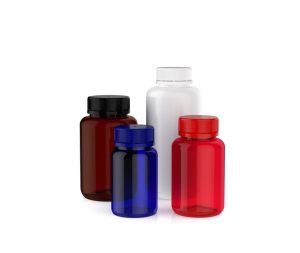Sustainable packaging is a method of using a product to minimise environmental impact and ecological footprint. It involves increased use of life cycle inventory and assessment. This reduces the energy and resources used to produce the product, thereby reducing the product’s ecological footprint and allowing the product to be reused and recycled.
Recyclability versus carbon footprint
In recent years, sustainable packaging efforts have primarily focused on increasing recycled content in packaging. However, the carbon footprint of packaging is also significant to consider.
 The best way to determine a package’s carbon footprint is to measure its energy intensity. This can be determined by examining the process used to produce the product, including the raw materials used and any transport involved.
The best way to determine a package’s carbon footprint is to measure its energy intensity. This can be determined by examining the process used to produce the product, including the raw materials used and any transport involved.
A carbon footprint calculator can be a good resource for estimating your business’s overall emissions. But finding a supplier that offers the products you need to meet your sustainability goals can take time and effort. Luckily, Walmart has taken a different approach. In its “Sustainable Packaging Playbook,” it’s placed recyclability front and centre.
Walmart has also asked suppliers to report on their progress in reducing greenhouse gas emissions associated with packaging. The company has also announced a new imperative: to reduce gigaton of greenhouse gas emissions by 2030.
Food waste
Sustainable packaging for food waste can play a critical role in reducing the environmental impacts of food production. Consumers can reduce their environmental impact by designing and distributing easily recyclable packages. Today, over one-third of the world’s total food is wasted. That means 1.3 billion tons of food are lost every year. However, only some of this can be prevented.
Increasing consumer awareness and environmental concerns are driving a shift in how consumers shop for food. As a result, more and more food and beverage companies are investing in developing environmentally-friendly alternatives.
As a result, the packaging is becoming a primary concern for food and beverage manufacturers. In addition, more and more consumers are asking manufacturers to reduce the use of plastic and other single-use items.
While the US has a long way to go, the country has made significant steps toward increasing regulations to drive sustainability. For example, many states have enacted statewide packaging waste regulations.
Opportunities for small businesses
For small businesses, sustainable packaging is becoming a significant opportunity. Many consumers are increasingly conscious of the environment and want to ensure they do what they can to help. In addition, smaller businesses can reduce waste by using reusable containers and save money.
Sustainable packaging can help boost a company’s image by showing that it cares about the environment. As a result, reusable packaging is a perfect choice for ecommerce stores. By offering a green alternative to traditional boxes, an ecommerce store can increase its brand recognition and customer satisfaction.
Reusable packages are more affordable than other alternatives. This makes them a good option for small ecommerce stores, mainly if they sell little in quantity.
Sustainable packaging can also help a business become more efficient. By choosing more eco-friendly materials, the company will reduce its carbon footprint. In addition, these materials can be recycled or composted, reducing transportation’s carbon emissions.
How to Develop Sustainable Packaging
Developing sustainable packaging can be an excellent way to reduce your company’s ecological footprint and gain a competitive edge. First, however, you must follow industry best practices to succeed in sustainable packaging.
One way to do this is to adopt an eco-conscious mindset. This means minimising using materials that degrade quickly, such as plastic. Also, it makes sense to use recycled materials whenever possible. For example, if you are packaging your product with cardboard, consider replacing it with recyclable material.
It also makes sense to develop new kinds of materials. Some of these include bio-derived products, which are compostable and usually recyclable.
Another way to get around this is to design your packaging to be easy to recycle. You can do this by incorporating recycling stations into your design or integrating recycled content into your packaging. Using recyclable materials can also help you to lower your carbon emissions.
A third way to make your packaging green is to produce it in a way that uses fewer resources. This could include using biodegradable inks or designing your packaging to be easily reused.
Finding partners in the downstream packaging manufacturing process is also a good idea. For example, if you are a dairy producer, you should partner with upstream raw materials suppliers or a packaging converter. This is particularly useful if your packaging is designed to be lightweight. The benefits of making this kind of change are countless. You can reduce your company’s emissions, open up new markets, and gain a competitive advantage.